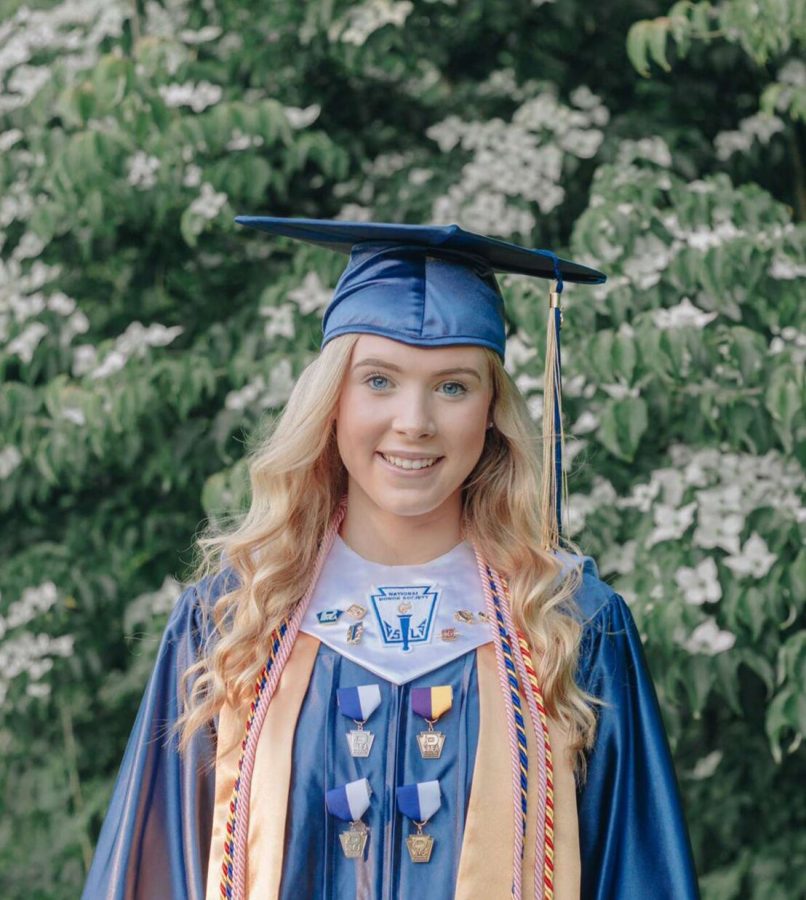Bridging the Gap Year with Bridget
Bridget Duffy, ‘25, is adjusting to life at Villanova following a COVID-19 gap year.
September 22, 2021
As people begin to see glimpses of normalcy after being rocked by a global pandemic, there also comes the realization that the society being stepped into is not the same one as pre-COVID-19. A coworker’s sick day will be taken more seriously, a self-service buffet is to become a thing of the past and people across the globe will foster a greater appreciation for life as they know it, or at least as they used to know it.
Another such change wrought by COVID-19 is the unique demographic of the Class of 2025. According to NSCRC, 2020 saw a 13.1% decrease in college enrollment as opposed to the 1.4% drop in 2019. At many universities across the country, students who were already taking a gap year in 2019 were able to take a second when the coronavirus hit, entering college with two more years of experience than their fellow freshmen. Most of these COVID-19 gap year students deferred their enrollment to the fall of 2021, allowing for a Villanova Class of 2025 with a handful of students still 17-years-old and others going on 20.
One such student in the high school class of 2020 is freshman Bridget Duffy, who is 19 years old. She graduated from Bayard Rustin High School in West Chester in June 2020, though she remarks that it “was not much of a graduation to begin with.”
“I applied Early Action to Villanova in 2019 and submitted my application by Nov. 1,” Duffy said. “On Aug. 5 of 2020, exactly nine days before I was supposed to move in as a freshman, I deferred my enrollment.”
Many students had various reasons for taking the COVID-19 gap year. Duffy explained her motives were backed by a plethora of concerns.
“I am at high risk for COVID because I was born with several heart defects, which make me more prone to harsher symptoms,” Duffy said. “I also did not like the University’s policy at the time of sending students home who contracted COVID-19 and lived within 300 miles. I did not want to risk giving COVID to my entire family, so putting myself and therefore them at risk was not an option.”
She also went on to explain that it is a lot of money to pay without the whole experience, with many classes confined to Zoom and online last year.
In the gap year, Duffy did not skip a beat, utilizing her time off to the fullest. She tutored two elementary school students through Cyber School from their home. Duffy also was a field interim for now Rep. Chrissy Houlahan from PA 6th District in her campaign for Congress, playing an instrumental role running her postcard campaign. Duffy also wanted to further her education during her gap year, which she did by taking some online classes through Coursera and edX.
“I think taking the gap year has given me a fantastic advantage, that being a really deep appreciation for everything we get to experience now,” Duffy said. “Because I put it off, I am really able to enjoy everything way more.”
Thus, the choice of amazing individuals like Duffy to take the COVID-19 gap year has allowed the class of 2025 to have a special dynamic like no other. However, one possible problem could be the gap in age and maturity preventing intra class cohesion.
“I definitely have noticed the age difference in our class, and a slight maturity discrepancy as well,” Duffy said. “It is easy to distinguish a 17-year-old from someone going on 20.”
This being said, the Class of 2025 has much to look forward to. Our differences offer opportunities for the mixing of ideas and culture to create something truly beautiful. When asked if she felt happy about her decision to join the Class of 2025, Duffy said that she was simply thrilled, as all of us should be.


